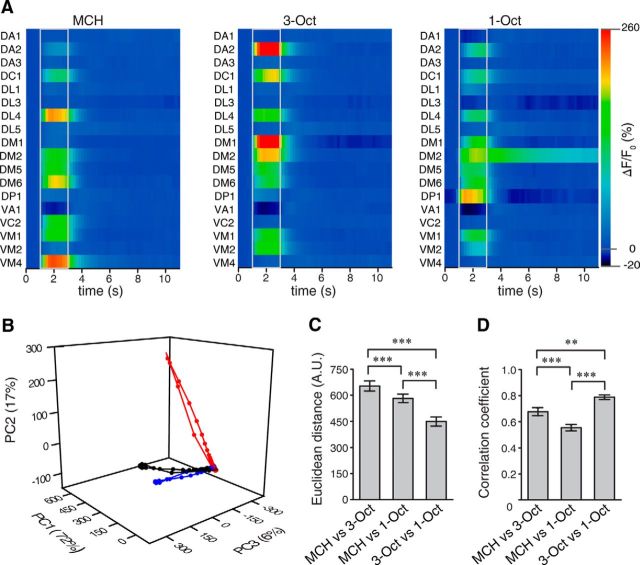Figure 5.
Dynamics and similarity of glomerular activity patterns in olfactory projection neurons in the antennal lobe. A, Odor-evoked changes in fluorescence emitted by the Ca2+ sensor protein GCaMP3.0 over time, shown as false colors in 18 identified glomeruli, in response to the odorants MCH, 3-Oct, and 1-Oct. Odor onset and offset are indicated by gray lines. Values indicate mean; n = 20 animals. B, PCA of the time courses of the mean odor-evoked responses in olfactory projection neurons across all 18 glomeruli. The first three principal components covered 95% of the variance. C, Euclidean distances between the spatially distributed Ca2+ activity evoked by the three odorants at the time point of maximal Ca2+ change, which was variable across individuals. The Euclidean distance between the similar odors was significantly smaller than between dissimilar odors. D, Pearson's correlation between spatially distributed glomerular Ca2+ activity patterns evoked by the three odorants at the time point of maximal correlation. The correlation coefficient was significantly higher between the similar odors than between the dissimilar odors. ***p < 0.001 (repeated measures one-way ANOVA with Bonferroni post hoc test). **p < 0.01 (repeated measures one-way ANOVA with Bonferroni post hoc test). n = 20. Bars indicate mean ± SEM.

